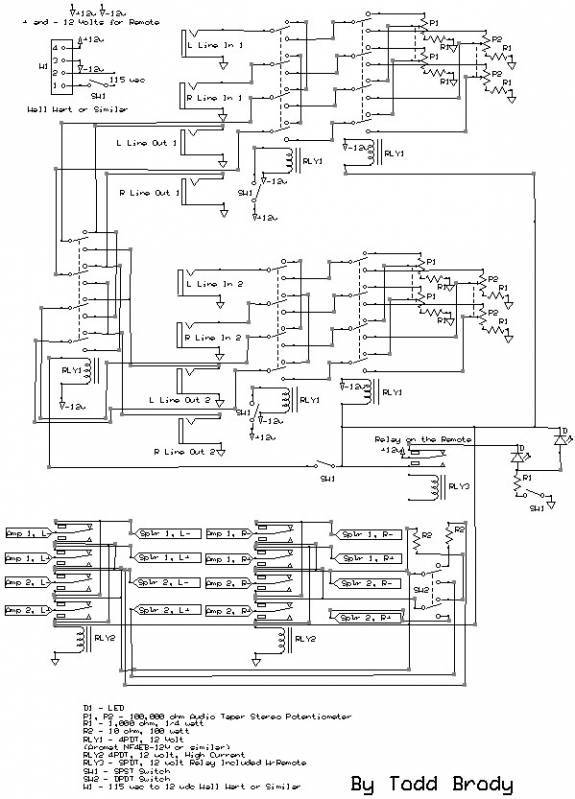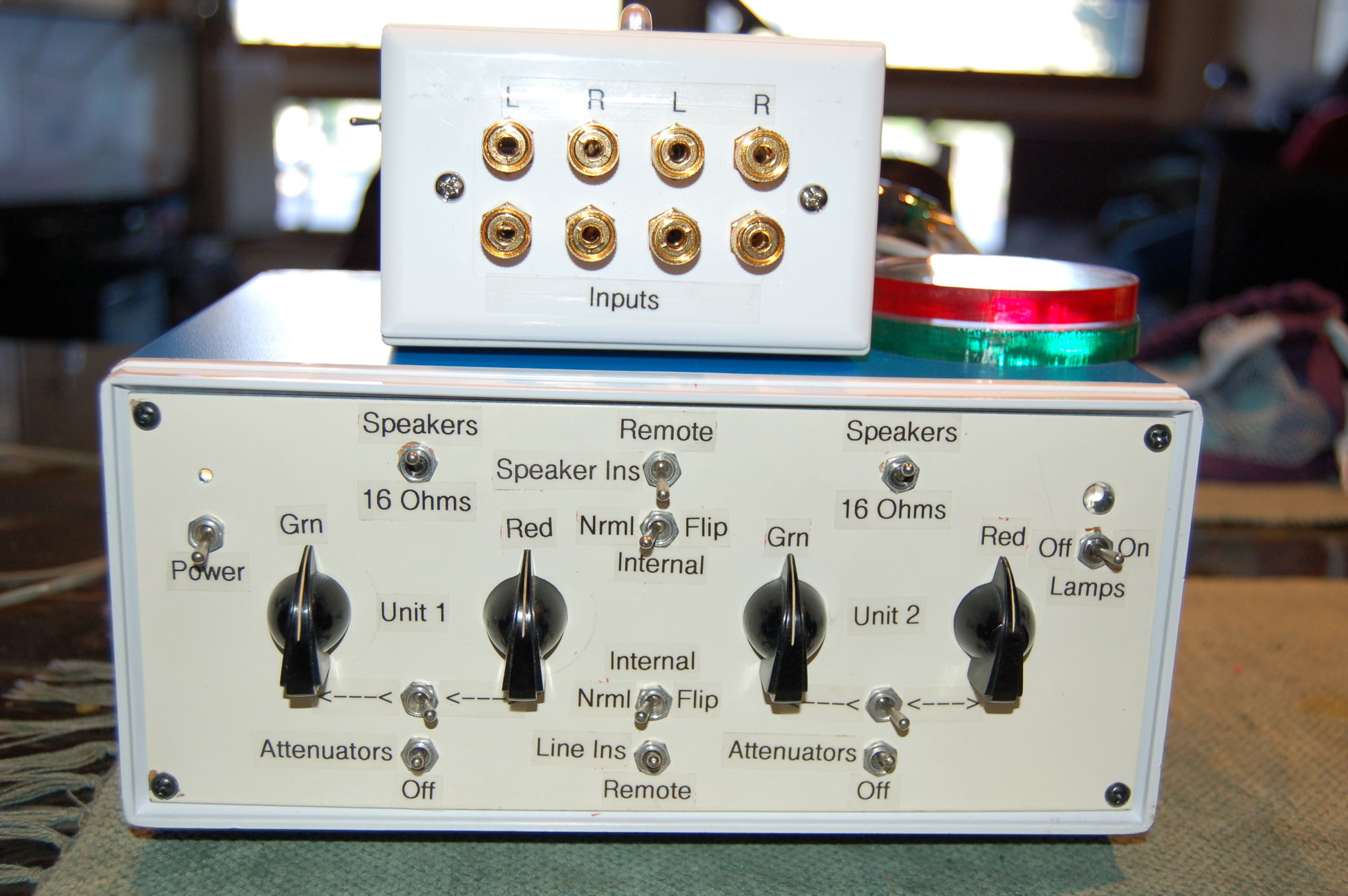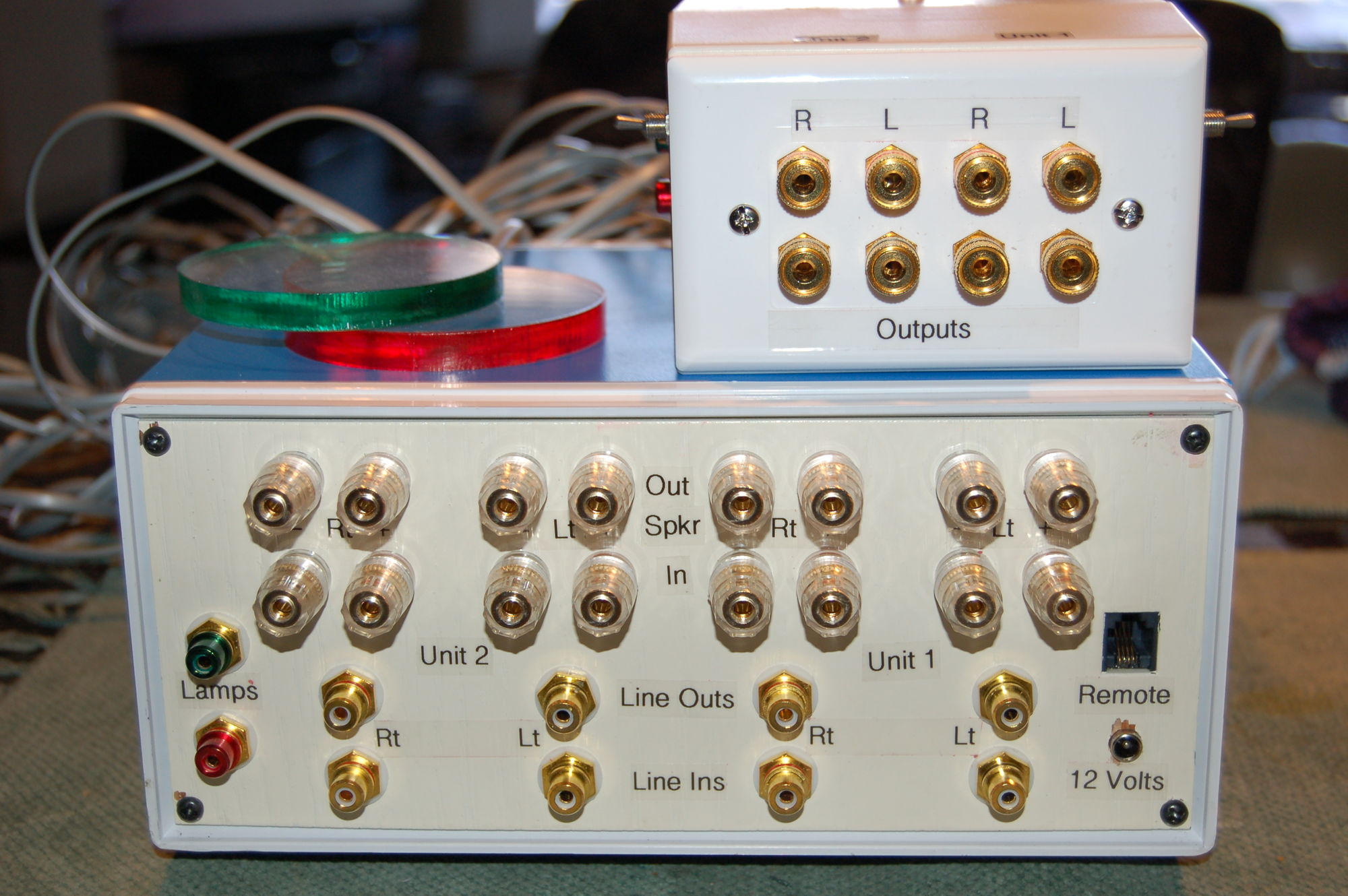How do you A/B amps in your system?
Comparing two different amps in my system of separates requires changing speaker cable connections, inputs, and sometimes system volume. Do you have any tricks you use to simplicity the switch over and minimize time between hearing one then the other? I know audio reviewers make comparisons between amps, but for me there is more subjectivity at play than say comparing two input components. Is this just the nature of the beast, or do you veteran listeners have tips and tricks!?
It’s pretty easy for me. My rack is between my speakers and all are quite a few feet from the wall behind the speakers ("front wall"). Each amp has speaker wires already in the back. Let’s say I’m listening to A, first. I play a test tone (say, 250 hz.) and do a db reading on my phone. (e.g. 80 db on a C weighting). I listen to amp A. SWITCH: To switch from A to B, I
I play that same test tone (250 hz.) and do a db reading on my phone and match it to amp A using the preamp volume. I listen to amp B. The switch between amps takes maybe 2 minutes. |
Typically, after one quick switch to hear note any obvious differences. I’ll put the new amp in for a week and try not to "listen to the amp", just the music. Then I will switch. Do this a couple times and the differences in gestalt and details will become clear. Rapid back and forth changes... with all the physical stuff in between will erase any memory you have of the music you heard before. Professional dealers have done enough A-B ing that they may have developed a better sense than most of us normal people. Besides there are dozens of aspects to the music... so you can only hold a couple during quick changes. Experienceing and learning the differences in amps requires time and lots of different musical types. |
Like @ghdprentice, I use long term listening sessions for evaluation, not A/B back and forth. Extended sessions give me chance to listen to a wide variety of music and get a good feel for it's strengths and weaknesses. Some things really start to stand out after a few days. |
Thanks for the thoughts, and @lanx0003 thanks for the exact tool. Of course on Audiogon we will have to debate the sound of the switcher! Lol |
Thanks @carlsbad2 . I do that in my studio, sometimes, but it's not an option in our living room 😄 |
I developed a universal switcher that lets me compare any two pieces of equipment or 4 pair of speakers with adjustable volume matching. I also made an A/B/X, again, with level matching, but it is primarily for speakers. Both have wireless remote control with console override and "tell tales" that can be displayed, or not. That displayed Amazon box may not be what you want to use if you have a tube amp because some do not like to run with no load. My universal switcher takes care of that too.
|
@peterf6 My entire system wouldn’t be an option in many living rooms....I currently have 4 sets of floorstanding speakers in my living room. My amp is 7 ft wide and 300 lbs.
|
| Post removed |
Yes - quite simply I reconnect the sets of cables (input ICs & out SCs) between 2 amps. Move the amps themselves, if space requires. You swap in an amp, and then listen AS NORMAL to your preferred music material, for a duration. Rinse, repeat. For an experienced audiophile, the sonic differences (more importantly - your interpretation of them) will at first manifest, then solidify / stabilize, and finally become quite consistent over time. Switchboxes meant to reduce swap-time is a false optimization. Such scenarios do 2 things:
|
| Post removed |
@ghdprentice has it right, extended listening for each amp will tell which one is the best for you and your system. And you are right, you have to let the gear settle in for a while before you can truly judge its character, switching things around constantly will not give accurate results. I just went through this process in the fall, and am now selling an amp I thought I would keep forever. |
Thank you all for sharing your experiences and what you have found useful. @toddalin thanks for sharing your design and the warning about tube amps (which is one of what I'm comparing). And I guess @zlone your experience shows that it's possible to hear well enough to overcome bias, which was one of my primary questions. |
I bought an Audio by Van Alstine ABX Comparator to switch between my tube and solid state amps on the fly. Works like a charm - it allows one to switch between 2 amps, 2 source devices or preamps, and 3 sets of speakers, in any combination. It also has an automated switching mode for true blind comparisons. Highly recommended. |
I have a Schiit Kara preamp. It has three gain settings including a passive mode where the signal goes only through the RL volume control, and if the volume is wide open, not even that. There are both SE and balanced inputs and outputs. I can connect multiple preamps, DACs, CD transport, etc. and output to multiple amps or powered speakers. Selecting the correct input, gain mode, and volume setting I can quickly switch which combination of gear I'm listening to. It's very useful for quick comparisons though I do agree that extended listening is critical to a full evaluation. |
@ toddalin thanks so much for bringing the topic up of tube amplifiers. Your design/ piece of equipment looks pretty intense. For everyone else there is a guy out of England that made me a loaded switcher box because I have a tube amp as well as a set of hybrid mono-blocks that I felt needed the extra protection and I didn't want to fiddlle-faddle around with switching cables around. I think the idea of comparison comes down to your ears and what sounds "right" for you. You can do all sorts of tests such as have been mentioned but in the end it has to "sound right" for you, your ears. |
Some tube amps will require "an extra layer of protection" in that the milliseconds that the relay is open during switching can do damage to them.
Not shown in my schematic, but added later, each speaker INPUT also has a switch that inserts a 261 ohm, 30 watt resistor that "stays with the amplifier" so that there is always a minimum of 261 ohms across the output, even when the relays are open. The value was selected after discussion with on-line "tube people" to select a value high enough so as to have very little effect when playing though a set of speakers, but low enough to effectively "load" the amplifier. This would drop a 16 ohm load to about 15.1 ohms, or an 8 ohm load to about 7.8 ohms.
On another note! For those who "poo poo" A/B testing, consider this. You can listen to each system as long as you desire. Maybe you don’t even want to hear the other system. So you are casually listening to one of your favorite tracks and you come across a passage and say to yourself, "That sounds a bit strident. I wonder if it is the cut, or a feature/flaw of the speaker." So you instantly switch to "B" and replay/continue the passage and listen again for a difference. And of course they need to be the same volume for a fair comparison. YOU CAN’T DO THAT ANY OTHER WAY! |
It makes total sense that you gain one set of information from long-term varied listening and another from the immediate A/B of a section that the switching devices provides. The one is more of a gestalt of the amp while the other provides details that might be lost in a fog of memory. Thanks again everyone for this informative discussion, and for keeping our tube amps from burning up should we try out a switcher! |
@toddalin Nice! |
@bassbuyer That looks like a cool one. I love that the VU meters are so broken down in the sub 10 Watts area. You can watch to see how often you get beyond the first watt! |
@webking185 You make such a nice point: Once you are listening to a certain level of sound quality, you're not so much listening for a difference between apples and oranges as you are for nuances between varieties of apples. I'm swapping a Marantz 8b and a Schiit Aegir on a 90db efficient pair of vintage KEFs. They both sound delicious. |




